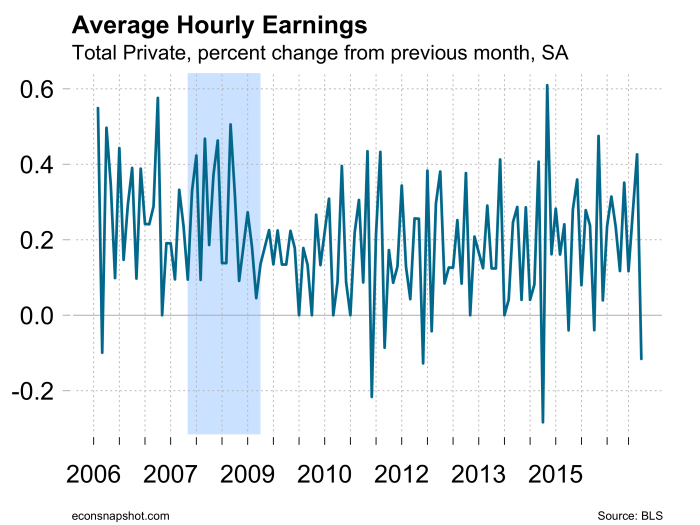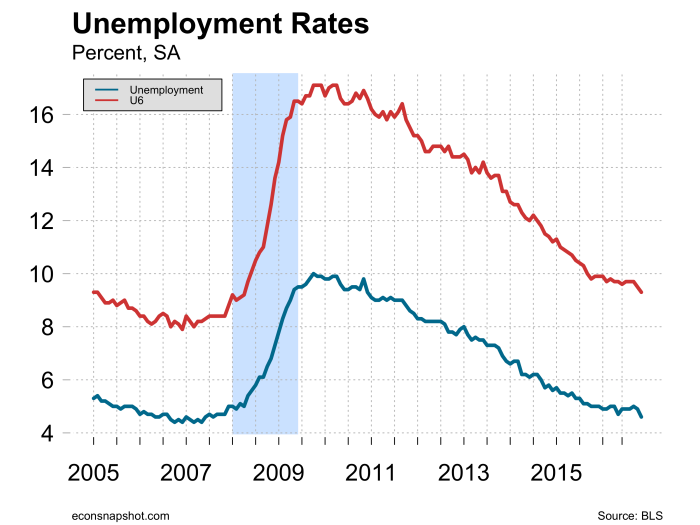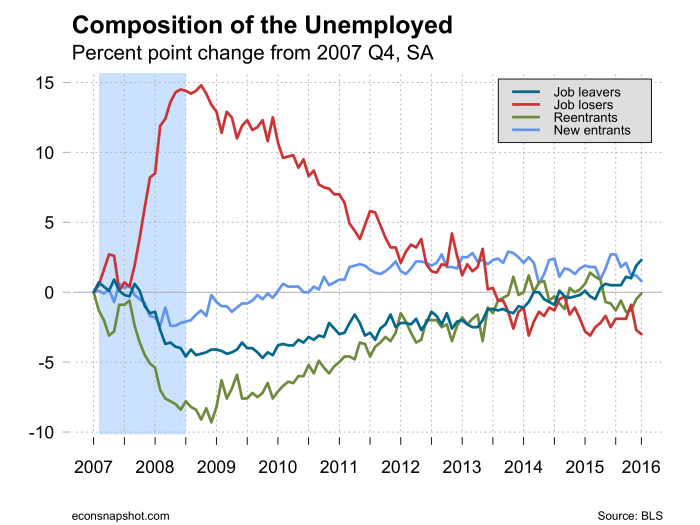By Thomas Cooley, Ben Griffy, and Peter Rupert
Today the BLS announced that November payroll employment increased 178,000. This was in line with expectations and consistent with recent months. Several of the headline numbers indicate a very strong jobs report: unemployment declined to its lowest level since August 2007; but these numbers mask the continued truncation in the labor force, as much of this decline was driven by a decline in the labor force participation rate. The establishment survey contained positive results for the employed.

Of the increase in employment, 156,000 were private sector jobs, up from 135,000 in October. The single largest category was the services sectors, providing 139,000 new jobs, which was more than the 128,000 created in October. About half of this came from professional services, while most of the rest was composed of education and health services. Government employment (local, state, and federal) increased by 22,000, up from 7,000 in October. Average weekly hours held constant at 34.4, having changed little over the past year:

Hourly earnings showed a small decline, moving from $25.92 to $25.89 per hour, and breaking a year a positive growth, though the decline was small and year over year, the growth rate was still positive:
As with last month’s employment report, the household survey again contained some less positive results for the US labor market. Unemployment continued to trend down, declining to 4.6 percent from 4.9 percent in October, it’s lowest since before the recession:
More inclusive measures (U6) also exhibited this downward trend. The rate for adult men declined from 4.6 to 4.3, and the rate for women declined from 4.3 to 4.2. Superficially, all of these statistics are very positive. However, much of the decline was driven not by new jobs, but by unemployed leaving the labor market, which contributed about a third of the decline in the unemployment rate:


Accounting for this decline were a large decline in reentrants and new entrants to the labor market, which combined to account for 144,000 of the overall 387,000 decline in unemployment levels.
Both of these statistics suggest that unemployment is a very persistent state for some workers, leading to discouragement among workers. Indeed, the household survey also reports a large uptick in marginally attached workers, from 1,700,000 to 1,932,000, with about half of this increase coming from discouraged workers.
The only real take-away is that indicators for the labor market are mixed at this point. For those who are attached to the labor market, there are positive signs about employment opportunities. The continuing concern is the decline in labor force participation. However, this report was sufficiently strong and should not deter the Fed from making its expected move on interest rates at he next meeting.